Casey Lam
Real-Time Likelihood-Free Inference of Roman Binary Microlensing Events with Amortized Neural Posterior Estimation
Feb 17, 2021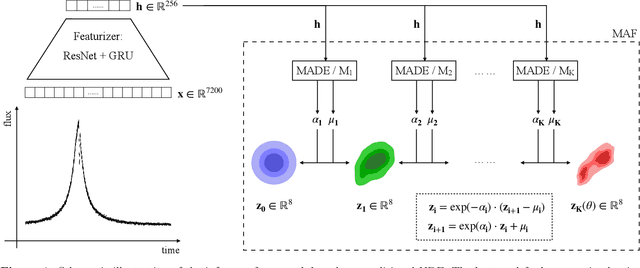
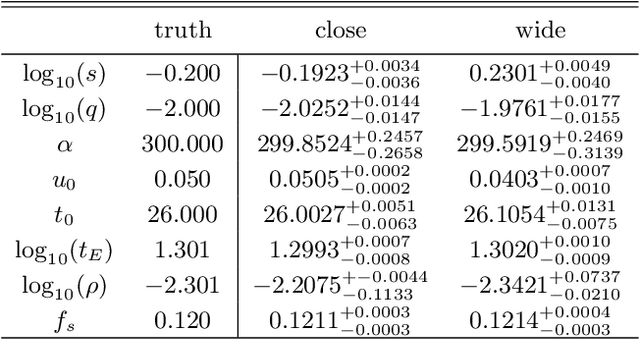
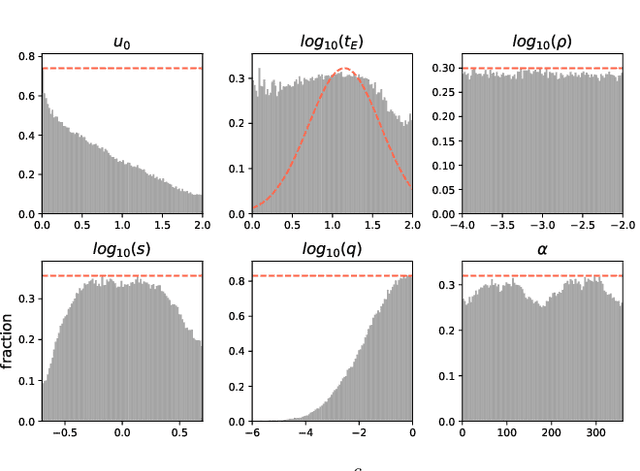
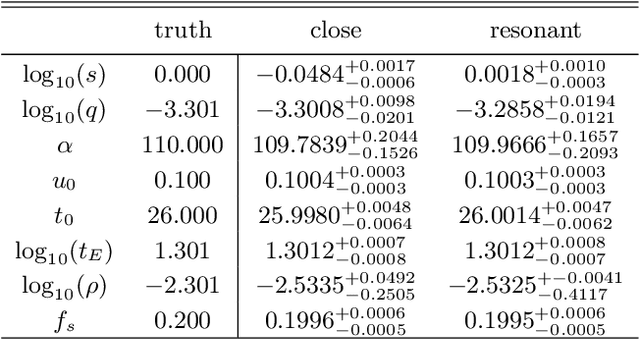
Abstract:Fast and automated inference of binary-lens, single-source (2L1S) microlensing events with sampling-based Bayesian algorithms (e.g., Markov Chain Monte Carlo; MCMC) is challenged on two fronts: high computational cost of likelihood evaluations with microlensing simulation codes, and a pathological parameter space where the negative-log-likelihood surface can contain a multitude of local minima that are narrow and deep. Analysis of 2L1S events usually involves grid searches over some parameters to locate approximate solutions as a prerequisite to posterior sampling, an expensive process that often requires human-in-the-loop domain expertise. As the next-generation, space-based microlensing survey with the Roman Space Telescope is expected to yield thousands of binary microlensing events, a new fast and automated method is desirable. Here, we present a likelihood-free inference (LFI) approach named amortized neural posterior estimation, where a neural density estimator (NDE) learns a surrogate posterior $\hat{p}(\theta|x)$ as an observation-parametrized conditional probability distribution, from pre-computed simulations over the full prior space. Trained on 291,012 simulated Roman-like 2L1S simulations, the NDE produces accurate and precise posteriors within seconds for any observation within the prior support without requiring a domain expert in the loop, thus allowing for real-time and automated inference. We show that the NDE also captures expected posterior degeneracies. The NDE posterior could then be refined into the exact posterior with a downstream MCMC sampler with minimal burn-in steps.
Automating Inference of Binary Microlensing Events with Neural Density Estimation
Oct 08, 2020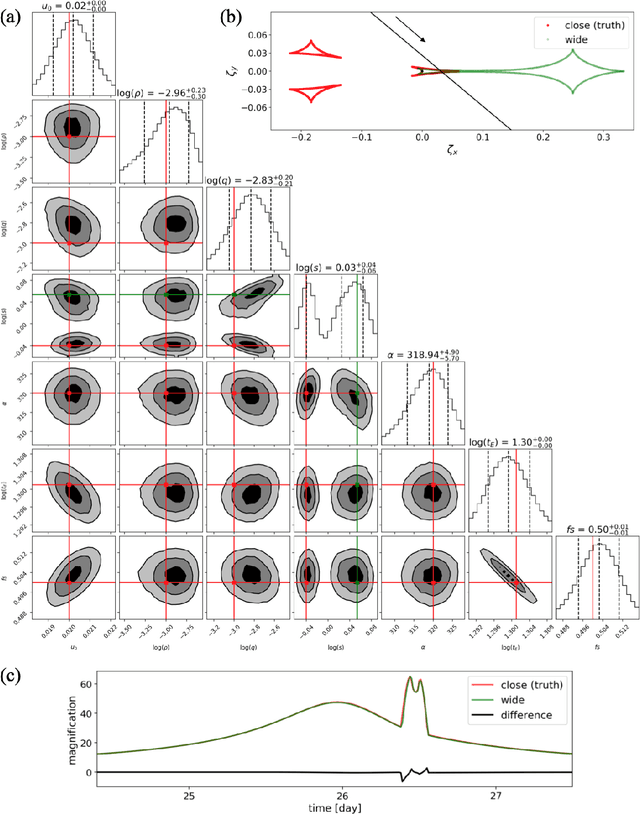
Abstract:Automated inference of binary microlensing events with traditional sampling-based algorithms such as MCMC has been hampered by the slowness of the physical forward model and the pathological likelihood surface. Current analysis of such events requires both expert knowledge and large-scale grid searches to locate the approximate solution as a prerequisite to MCMC posterior sampling. As the next generation, space-based microlensing survey with the Roman Space Observatory is expected to yield thousands of binary microlensing events, a new scalable and automated approach is desired. Here, we present an automated inference method based on neural density estimation (NDE). We show that the NDE trained on simulated Roman data not only produces fast, accurate, and precise posteriors but also captures expected posterior degeneracies. A hybrid NDE-MCMC framework can further be applied to produce the exact posterior.
 Add to Chrome
Add to Chrome Add to Firefox
Add to Firefox Add to Edge
Add to Edge